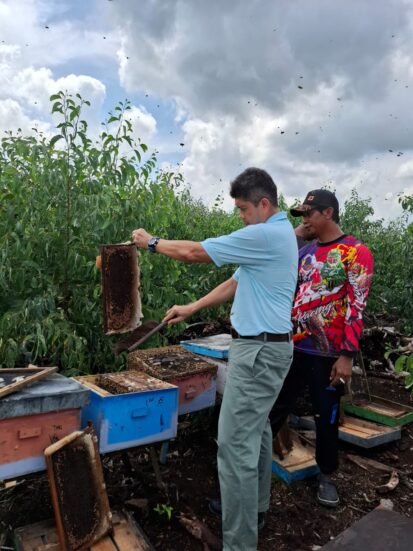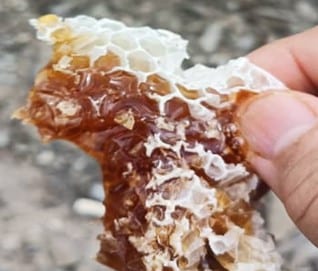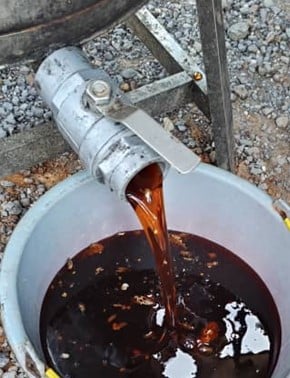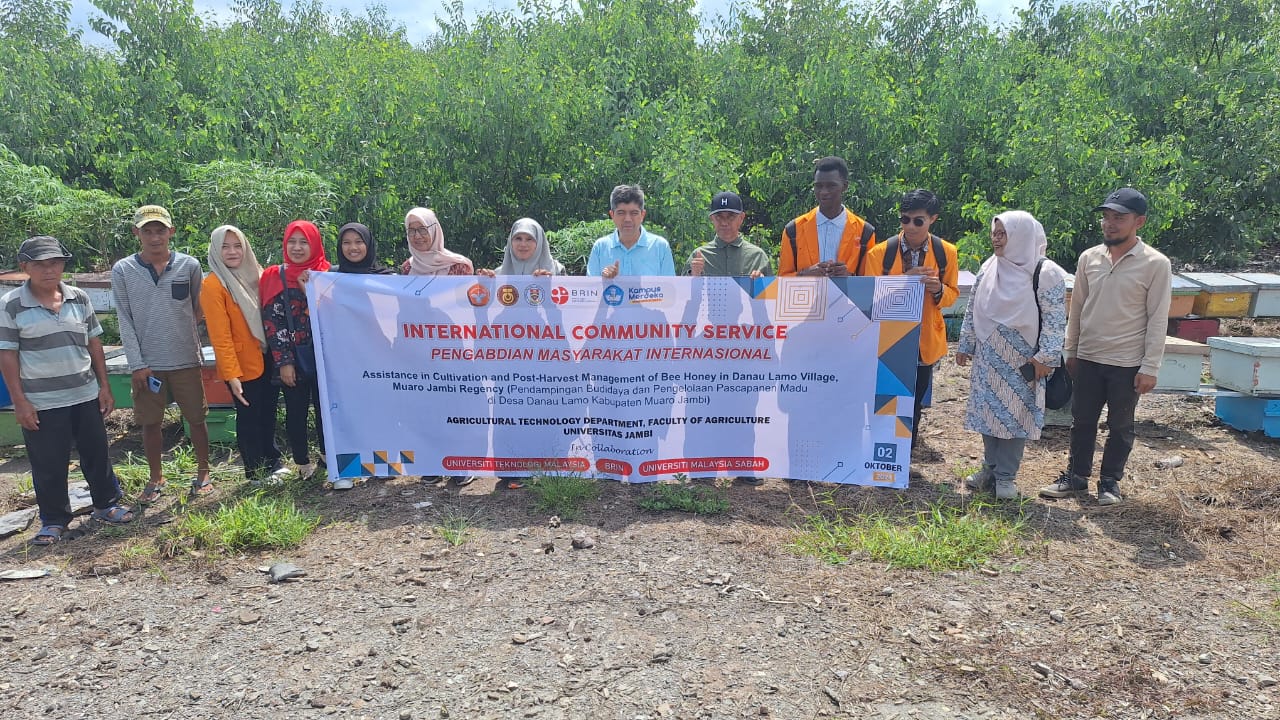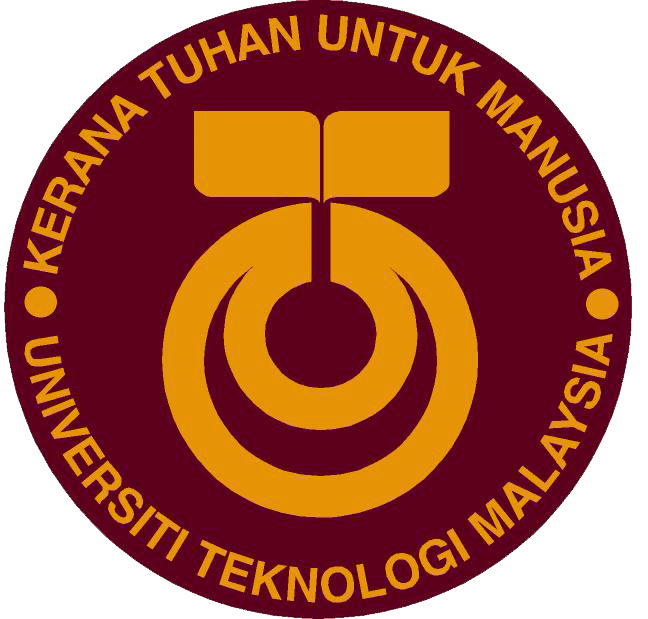JAMBI, Oct 3 – Universiti Teknologi Malaysia (UTM) made a significant contribution to promoting sustainable agricultural practices by participating in the International Community Service Program on the Cultivation and Post-Harvest Management of Bee Honey in Danau Lamo Village, Muaro Jambi Regency. Organized by the Faculty of Agricultural Technology at Universitas Jambi (UNJA), the event attracted participants from diverse regions, including Tanzania. Representing UTM was Professor Fahrul Huyop, joined by Associate Professor Dr. Nurul Huda from Universiti Malaysia Sabah (UMS). Together with their counterparts from UNJA, they collaborated with local farmers, sharing best practices in honey bee cultivation and post-harvest processing techniques. The program aimed to equip farmers with advanced methods to improve the quality and marketability of their honey.
Participants engaged in hands-on activities throughout the day, starting with selecting bee nests for harvesting and safely removing bees from hives to extract honey. The collected honey was then processed through water removal and filtration to ensure its purity before bottling for sale.
Professor Fahrul highlighted the significance of these initiatives in raising local honey production standards, stating, “By involving local communities and providing practical training, we empower farmers with the knowledge and skills to produce high-quality honey capable of competing in larger markets. This not only benefits the local economy but also promotes sustainable agricultural practices in the region.”
Raw honey, priced at approximately Rp.50,000 (RM10) per liter, undergoes a series of steps, including filtration and packaging, before reaching consumers. This initiative underscores the importance of community engagement in addressing global agricultural challenges. Through its participation, UTM has strengthened its international ties and reaffirmed its commitment to community service and sustainable agricultural innovation.
This partnership not only expands UTM’s global outreach but also serves as a model for future projects that deliver tangible benefits to rural communities worldwide.
